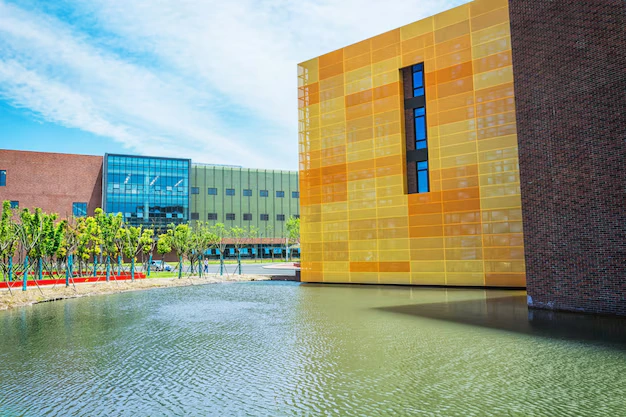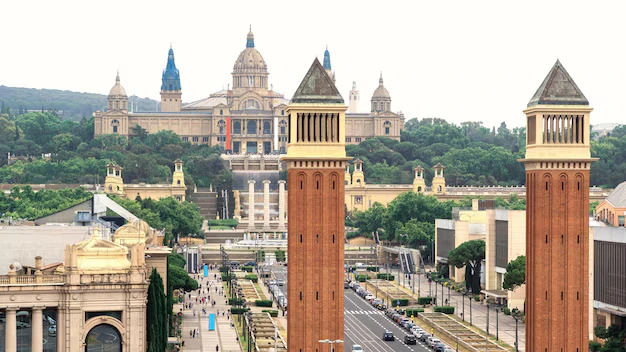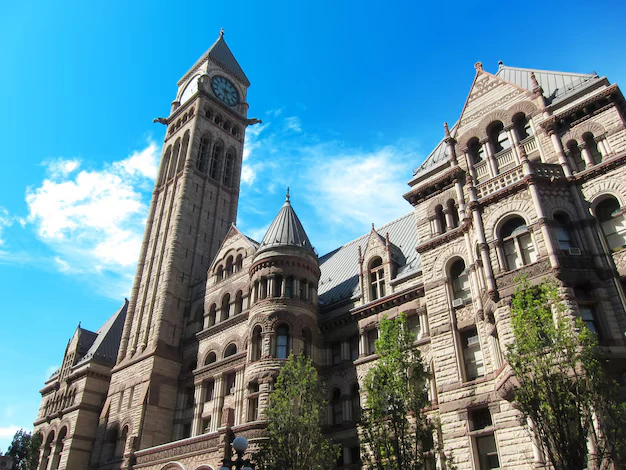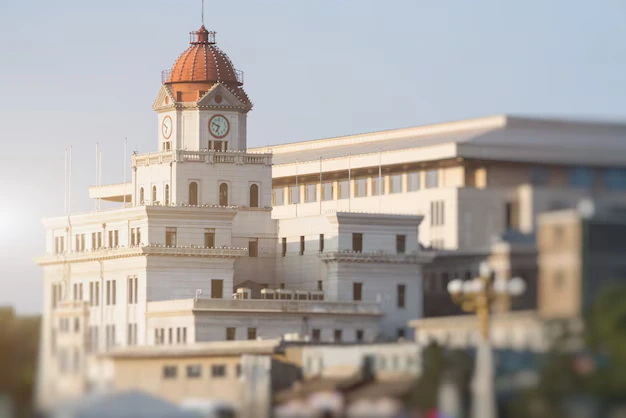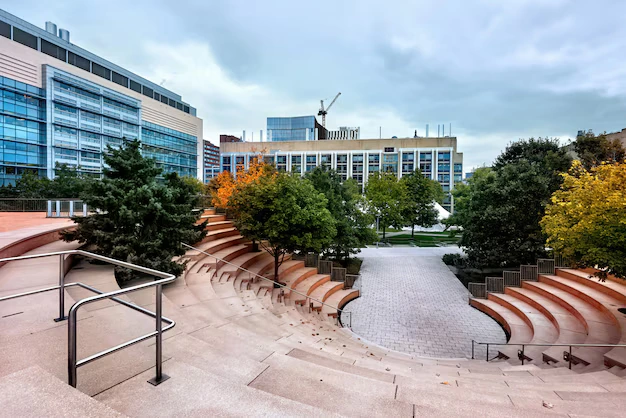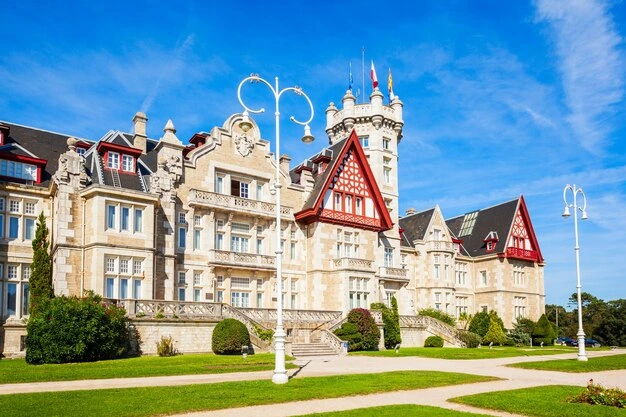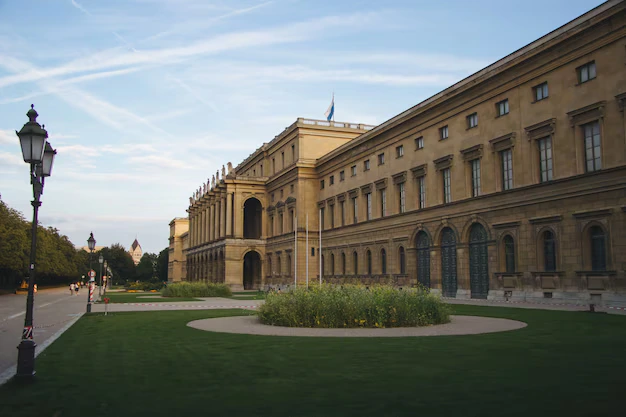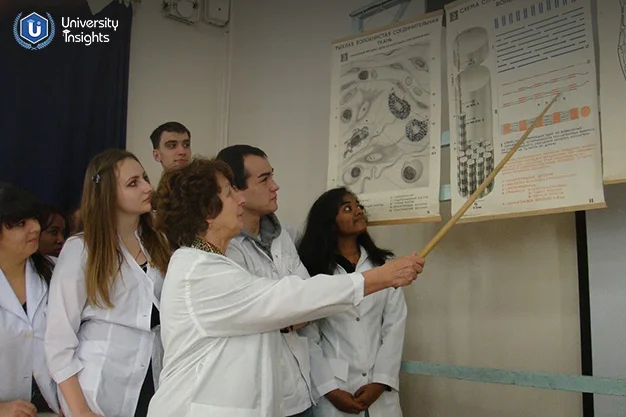Many countries around the world offer MBBS (or equivalent) programs to international students. Below, we highlight some of the most popular destinations for Indian students, along with their key features:
MBBS in Russia
Russia has been a preferred destination for Indian students pursuing MBBS for decades. Russian medical universities are known for their strong fundamentals in science, experienced faculty, and robust infrastructure. Every year, hundreds of Indians enroll in Russian universities for medical studies.
Course Duration & Medium: MBBS in Russia is generally a 6-year program (M.D Physician degree, which is equivalent to MBBS). Many universities offer the course in English medium for the first few years, alongside Russian language classes. From the third year onward, clinical training may involve Russian language as students interact with local patients, so learning basic Russian is necessary.
Quality of Education: Russian universities like Moscow State University, Saint Petersburg State Pediatric Medical University, Kazan Federal University, Perm State Medical University, and Volgograd State Medical University (among others) are internationally recognized. They have good hospital affiliations, giving students exposure to clinical practice. The teacher-student ratio is often favorable, and many institutions have a long history of training international doctors.
Fees and Living Cost: One major advantage is affordability. Tuition fees in Russia range roughly from USD 3,000 to 6,000 per year (approximately ₹2.5–5 lakh/year) depending on the university. The cost of living (hostel, food, etc.) is moderate – about USD 150–250 per month (₹12,000–20,000). So, the total annual expense can be around ₹4–6 lakh, which is far less than many private colleges in India. Additionally, Indian mess or food arrangements are available at many universities due to the large number of Indian students.
Recognition: All top Russian medical universities are listed in the World Directory of Medical Schools (WDOMS) and are recognized by WHO. The NMC (India) recognizes degrees from these institutions, meaning graduates are eligible to take the screening test (FMGE/NExT) in India. Russian degrees are also accepted for licensure or further studies in other countries (graduates can attempt exams like USMLE for the US or PLAB for the UK).
Admission and Eligibility: Getting into a Russian MBBS program is relatively straightforward – no separate entrance exam (aside from NEET qualification) is needed. Basic eligibility (50% in PCB in 12th and NEET) suffices. The academic year usually starts in September. It’s advisable to apply by July or August. Russian universities typically provide an invitation letter which is required for the student visa.
Campus Life & Safety: Russian universities often have a diverse international community. There are sizable Indian student communities at major medical colleges, which helps newcomers feel at home. Campuses are generally safe, with dormitories equipped with security. However, students must adapt to the cold climate, as winters in Russia can be very harsh (temperatures often dropping well below 0°C in many regions). With proper winter clothing and heating facilities, this is manageable. Students also experience a new cultural environment and can travel within Russia or neighboring countries during vacations.
Note: Studying in Russia requires dedication, especially to overcome the language barrier by the clinical years. Many Indian students from Russia have successfully cleared the FMGE in India. Choosing a reputable, established university is key – avoid lesser-known institutions with poor track record.
MBBS in the Philippines
MBBS In Philippines is another top choice for Indian students, particularly due to the English-speaking environment and a curriculum similar to India/USA. The country offers an MD program (equivalent to MBBS) through a slightly different structure: students first complete a pre-medical course (like BS in Biology or equivalent) of 1.5-2 years, and then enter the 4-year MD program.
Course Structure & Duration: The total duration is typically 5.5 years (for students who have a 12th grade qualification). After the pre-med (which covers foundational science courses and is more of a B.Sc. degree), students must take the NMAT (National Medical Admission Test) in the Philippines to qualify for the MD program. The 4-year MD then includes academic education and clinical rotations (the final year is often hands-on clinical internship). All instruction is in English, which is an official language of the Philippines, so Indian students face no language barrier academically or in daily life.
Why Philippines: There are several advantages:
- The medium of instruction is English, and almost everyone speaks English, so communication with patients during clinical training is easy.
- Tropical Climate & Disease Pattern: The Philippines has a tropical climate and disease spectrum similar to India (dengue, tuberculosis, etc.), providing Indian students with relevant clinical exposure.
- USMLE Preparation: The medical curriculum in the Philippines is based on the US system, making it conducive for those interested in taking USMLE for USA residency later. In fact, many Philippines graduates go on to the USA.
- High FMGE Passing Rate: Historically, Indian students from the Philippines have had relatively better success rates in the FMGE (screening test) compared to some other countries, attributed to the English language instruction and similar clinical exposure.
Top Universities: Notable NMC-recognized medical colleges in the Philippines include University of Santo Tomas, University of the East Ramon Magsaysay (UERM), Cebu Institute of Medicine, Davao Medical School Foundation, AMA School of Medicine, and Our Lady of Fatima University, among others. These universities are recognized by WHO and offer good facilities.
Fees and Living Cost: The tuition fee in the Philippines is moderate – roughly USD 3,000–5,000 per year for the MD program (₹2.5–4 lakh/year). The pre-med portion may cost a bit less per year. Many universities quote a package for the entire 5.5 years. Overall, the total tuition might come around ₹20–30 lakh for the entire duration, depending on the college. Cost of living is relatively low: perhaps ₹15,000–20,000 per month covering accommodation, food, and transport, though it can vary by city (Manila is more expensive than smaller cities like Davao or Cebu). Being an Asian country, food (including Indian restaurants or groceries) is available, and the cultural adjustment is easier.
Recognition: Medical degrees from the Philippines are recognized by the NMC, and the colleges are listed in WDOMS. After graduation (which includes an internship in the Philippines hospitals), students are eligible to take the FMGE/NExT in India. The Philippines’ medical education is also recognized by US and other countries; graduates can take USMLE, etc., for licensing exams abroad. It’s important to note under the latest NMC norms, one should complete the internship and obtain the medical license in the Philippines (by taking their Physician Licensure Exam) to be eligible for full registration in India.
Campus Life & Safety: The Philippines offers a friendly environment for international students. Filipinos are known for their hospitality. There are many Indians especially in universities like AMA, UV Gullas, etc., and you will find Indian communities and festivals celebrated. The climate is warm and humid (similar to coastal India) which many Indian students find comfortable. Safety is generally good in campus areas; like anywhere, one should be cautious in unfamiliar city areas at odd hours.
Note: Ensure that you choose a reputed college that is recognized by both the Philippines authorities and NMC. Also, be prepared for the additional step of NMAT exam during your course (most Indian students manage to pass NMAT easily as it is an aptitude test). The Philippines can be an excellent choice for those who want an English-medium education with an environment close to India’s.
MBBS in Bangladesh
Bangladesh has emerged as a preferred destination due to its proximity and similarity to India in terms of culture, food, and even curriculum. In fact, the MBBS curriculum in Bangladesh is very closely modeled on the Indian system, and many textbooks used are the same as those in India. For Indian students, studying in Bangladesh can feel the closest to studying in an Indian medical college.
Course Duration & Medium: MBBS in Bangladesh is typically 5 years followed by an internship (which can be 1 year, often done in Bangladesh itself). The medium of instruction is English (though students will pick up some Bengali for patient interaction). Exams and coursework are in English.
Why Bangladesh:
- Similar Curriculum: The syllabus and training are parallel to what is taught in India, which helps immensely when appearing for FMGE/NExT.
- High FMGE Pass Rate: Statistically, graduates from Bangladesh often have one of the higher pass rates in the FMGE exam, likely owing to the similarity in medical education standards and no language barrier in learning.
- Affordable and No Entrance Exam: Admission is mostly based on 12th grade marks (and NEET qualification). The Bangladesh government has criteria (usually 60% in Biology and good overall PCB scores). There’s no separate entrance exam for foreign students beyond these criteria.
- Proximity and Comfort: Being a neighboring country, it’s easy to travel home during breaks (via flights or even land border in some cases). Food habits and lifestyle are very similar to what Indian students are used to. Many colleges have a good number of Indian students and even Indian mess facilities.
Top Colleges: Some well-regarded medical colleges in Bangladesh that attract Indian students include Dhaka National Medical College, Khulna Medical College, Rajshahi Medical College, Bangladesh Medical College (Dhaka), Enam Medical College, and Chittagong Medical College, among others. Seats for international (including Indian) students are often in private colleges and some public colleges under SAARC quota. The quality of education in top Bangladeshi colleges is quite good, with experienced faculty and busy attached hospitals (ensuring strong clinical exposure).
Fees and Living Cost: Bangladesh’s medical colleges tend to be reasonably priced. Many colleges charge an upfront fee for the entire duration (package ranging from USD 35,000–50,000 total which is roughly ₹25–40 lakh for 5 years). This often includes tuition and sometimes hostel. Living expenses are comparable to India – perhaps ₹10,000–15,000 per month for food, accommodation and personal expenses if not included in the package. Since a lot of daily-use items and even some brands are common between India and Bangladesh, students feel at home.
Recognition: All government and many private medical colleges in Bangladesh are recognized by NMC (previously MCI). The colleges are listed in WDOMS and recognized by WHO. Graduates receive an MBBS degree that is valid in India once the screening test is cleared. The degree is also valid for pursuing higher education abroad (like USMLE, etc.). Bangladesh’s medical degrees are well-regarded due to their rigorous training and stringent exam system.
Campus Life & Safety: Indian students typically find it easy to adjust in Bangladesh. The culture, music, language (Bangla has some similarity to Indian Bengali), and food have familiar aspects. There is also a favorable ratio of Indian students in many colleges. In terms of safety, Bangladesh is generally safe for international students; colleges often have dedicated hostels for foreign students. Students should of course exercise the usual precautions and respect local customs.
Note: Admission to Bangladesh can be competitive in its own way because the government sets a high academic bar for foreign students. Students with strong academics who just missed out on Indian admission find Bangladesh a great option. Make sure to apply through official channels (often there’s a government application system for foreign students) or trusted consultants, and pay attention to the required documentation (like equivalence certificates, etc.).
MBBS in Nepal
Nepal is another neighboring country offering quality medical education, and it has the advantage of no language barrier (Hindi/English widely understood) and no visa requirements for Indians (Indians can freely cross the border and reside in Nepal). For many, studying MBBS in Nepal feels like studying in India’s smaller towns, given cultural and geographical familiarity.
Course Duration & Medium: MBBS in Nepal is a 5.5-year program (4.5 years academic + 1 year internship). The medium of instruction is English. Many faculty members in private Nepali medical colleges are from India, and English is the academic language, though Nepali (and often Hindi) is used with patients.
Entrance & Admission: Several medical colleges in Nepal conduct their own entrance exams or accept scores from a common entrance (such as the exam conducted by Kathmandu University or Tribhuvan University or the Medical Education Commission of Nepal). Indian students often have to appear for these entrance tests (which can sometimes be taken in India or online) unless they are getting admission through certain reserved SAARC quotas. NEET qualification is still required from the Indian side. If you secure a seat, the process is straightforward since Indians don’t need a student visa for Nepal.
Top Medical Colleges: Some renowned institutions in Nepal include Institute of Medicine, Tribhuvan University (Kathmandu), B.P. Koirala Institute of Health Sciences (Dharan), Kathmandu Medical College, Manipal College of Medical Sciences (Pokhara), and Nepal Medical College. These colleges have a track record of Indian alumni and are recognized by NMC and WHO. They maintain good standards and clinical exposure, especially those affiliated with large hospitals in Kathmandu or other major cities.
Fees and Living Cost: Studying in Nepal is not as low-cost as some other abroad options, but it is still usually cheaper than many Indian private colleges. The tuition fees might range from ₹30–60 lakh total for the entire course (depending on college; public institutions like BPKIHS have subsidized rates, whereas private colleges are on the higher side). Some of this may need to be paid upfront or in installments. Living costs are relatively low – similar to India. Students spend around ₹10,000–15,000 per month on hostel/room, food, etc. And because Nepali currency is of similar value (slightly lower) to Indian currency, and Indian rupees are widely accepted in many places, financial transactions are easy.
Why Nepal:
- Cultural Comfort: Shared culture and open border means minimal adjustment issues. Indian festivals are celebrated, and food habits are similar.
- Language: No new language to learn – Nepali and Hindi have a lot of overlap and most people understand Hindi. Academically, English is used.
- Proximity: Quick and easy travel back home whenever needed.
- Recognized Degree: Degrees from Nepal are recognized by NMC. Many graduates easily transition to taking entrance exams for PG in India or other licensing exams.
Campus Life & Safety: Students in Nepal enjoy a friendly and safe environment. Many Indian students thrive there with the support of local friends and Indian peers. The natural beauty of Nepal (Himalayas, trekking, etc.) is a bonus for recreation. Safety is generally good, and Nepali people are known to be hospitable and respectful towards Indians.
Note: Getting into top Nepali colleges can be competitive as well, and the cost can be relatively high. It’s a good option for those who prefer not to go far from home and are willing to invest comparable to an Indian private college for a quality education sans the cultural shift. Always verify that the college is recognized by NMC and is well-established.
MBBS in Kazakhstan
Kazakhstan, located in Central Asia, has become a popular affordable destination for MBBS among Indian students in recent years. Kazakh universities offer a blend of Asian and European teaching styles and have started many 5-year MBBS programs which attract students who want a shorter course duration.
Course Duration & Medium: Many medical universities in Kazakhstan offer a 5-year MBBS program (some have 5 years + 1 year internship structure). Programs are offered in English for international students, although local language (Kazakh/Russian) basics are taught as a subject to help in clinical settings.
Why Kazakhstan:
- Shorter Duration: A 5-year program means you graduate faster and can potentially save a year.
- Affordable Fees: Kazakhstan’s medical colleges are known for low tuition fees, often ranging around USD 3,000–4,000 per year (₹2.5–3.5 lakh/year). This makes the total tuition very budget-friendly.
- Growing Popularity: Over the last decade, a significant number of Indian students have enrolled in Kazakh universities, leading to a supportive Indian student community there.
- Modern Infrastructure: The universities like Kazakh National Medical University (Almaty), Astana Medical University, Karaganda State Medical University, and South Kazakhstan Medical Academy have decent infrastructure, simulation labs, and associated hospitals for clinical practice.
Fees and Living Cost: As mentioned, tuition is quite low. Living cost in Kazakhstan is also manageable. On average, students might spend about USD 150-200 per month (₹12,000–15,000) on living expenses, including hostel, food, etc., especially in student cities like Almaty or Shymkent. University hostels are available and affordable. Thus, Kazakhstan offers a low-cost overall package (perhaps ₹20–25 lakh total for 5 years including living, which is among the lowest).
Recognition: Most medical universities in Kazakhstan that host international students are recognized by NMC and listed in WDOMS. A degree from Kazakhstan allows you to take the FMGE/NExT in India. The quality of education is decent, though not as research-oriented as some bigger countries – the focus is on core medical training.
Language and Culture: Kazakh and Russian are the local languages, but students in international programs manage with English for studies. You will learn some Russian phrases for clinical interactions. Culturally, Kazakhstan is moderately easy to adapt for Indians – the food can include options that suit Indian taste (some Indian restaurants are present in Almaty and other cities with student populations, and students often cook their own food). The climate includes cold winters and warm summers, with some cities experiencing subzero winter temperatures, so be prepared for that.
Campus Life: Universities there have an increasing number of foreign students (from India, Pakistan, Nepal, etc.), creating a multicultural campus. Sports and cultural events are part of student life. Safety is generally good on campus and in student accommodations; Kazakh cities are considered safe and foreigners are respected.
Note: As with any destination, it’s important to select the right university in Kazakhstan – one with a solid track record. The relatively newer popularity means you should verify the faculty quality and hospital tie-ups. Many students have had positive experiences and passed the FMGE after Kazakhstan MBBS, but self-study and keeping up with the syllabus is key.
MBBS in Uzbekistan
Uzbekistan has recently opened up more to international students and is quickly gaining attention as an MBBS destination. With its rich history and modernizing education system, Uzbekistan offers MBBS programs in English at affordable costs.
Course Duration & Medium: Uzbekistan’s medical universities offer 5 to 6-year MBBS programs. Some universities have a 5-year course format. The medium of instruction for international students is English, though Uzbek/Russian language classes are included to help students integrate clinically.
Why Uzbekistan:
- Affordable Education: Like other Central Asian countries, Uzbekistan’s tuition fees are low, roughly USD 3,500–4,500 per year (around ₹3–4 lakh/year).
- English-Medium Courses: A number of universities, such as Samarkand State Medical University, Tashkent Medical Academy, and Bukhara State Medical Institute, are offering courses in English and actively recruiting Indian students.
- Cultural Familiarity: Uzbekistan has a culture that has influences of both Central Asia and a bit of India (thanks to historical links). Students find locals warm and the environment friendly to Indians. Also, being a Muslim-majority country, Indian Muslim students sometimes feel at ease with cultural aspects like food (halal readily available).
- Growing Indian Community: As a newer destination, Indian student communities are growing in cities like Samarkand and Tashkent. This means you’ll likely be part of a closely-knit group of pioneers, which can be supportive.
Fees and Living Cost: Total expenses in Uzbekistan remain low. Annual tuition ~₹3-4 lakh, and living cost about ₹10,000–15,000 per month. Student dormitories are usually available and cost-effective. So, a ballpark total cost might be ₹20–28 lakh for the entire course including living, making it another budget option.
Recognition: The major medical universities in Uzbekistan that accept international students are recognized by NMC and are listed in the WDOMS. Graduates are eligible for FMGE/NExT. Since it’s a relatively new choice, when choosing a university, ensure it’s one that has the necessary accreditation.
Language & Lifestyle: Uzbek (and Russian) are local languages; you’ll learn some for patient interaction. However, the presence of Indian students means sometimes group studies in English help cover any gaps. The climate in Uzbekistan is continental – hot summers and cold winters, but typically a bit milder than the extreme cold of Kazakhstan or Russia. Lifestyle is comfortable with modern amenities in cities; Uzbekistan is known for its beautiful Silk Road cities and hospitable people.
Note: Uzbekistan’s government has been promoting international education, so conditions for foreign students are improving. Still, as a newcomer destination, do thorough research or consult with experts (like University Insights) about which universities have delivered good outcomes.
MBBS in Kyrgyzstan
Kyrgyzstan is often touted as one of the cheapest countries for MBBS. Located in Central Asia and known for its mountain landscapes, Kyrgyzstan hosts thousands of Indian medical students, especially due to aggressive promotion by education consultants.
Course Duration & Medium: MBBS in Kyrgyzstan is usually a 5 or 6-year program depending on the university (some offer an accelerated 5-year course). Instruction for international students is in English. Kyrgyz State Medical Academy, for example, has a 6-year program, whereas some like Asian Medical Institute offer 5-year MD programs.
Why Kyrgyzstan:
- Low Cost: The biggest draw is the low tuition fees – some universities have fees as low as USD 2,500 per year (₹2 lakh/year). This means even including living expenses, the overall cost can be under ₹20 lakh total, which is very affordable.
- Simple Admission: Admission procedures are straightforward, and many colleges have large intakes of foreign students.
- Indian Student Density: Because it’s so affordable, a huge number of Indian students study in Kyrgyzstan, especially at popular colleges. This creates a large Indian community where you won’t feel alone. Indian food, festivals, etc., are common in student areas.
- Moderate Climate: Compared to some of its neighbors, Kyrgyzstan (e.g., capital Bishkek) has cold winters but not as severely cold as Russia’s far north – making it slightly easier to adjust for some students.
Top Universities: Well-known NMC-approved institutions include Kyrgyz State Medical Academy (KSMA) in Bishkek, Osh State University, Jalal-Abad State University, and Asian Medical Institute. These have been enrolling international students for years. However, quality can vary – KSMA, being a government university, is considered the best among them.
Fees and Living Cost: As stated, fees range from USD 2,500 to 4,000 per year (₹2–3.2 lakh). Living in Kyrgyzstan is inexpensive – monthly expenses might be around ₹10,000–12,000 including hostel and food. Some colleges have Indian mess facilities or students cook their own meals in shared kitchens.
Recognition: Degrees from recognized Kyrgyz universities are accepted by NMC. Graduates can appear for FMGE/NExT. Since a large number of Indians have graduated from there, we have seen many attempt the FMGE; success requires self-discipline as the support for FMGE prep might not be built-in in these universities.
Campus Life & Safety: With so many Indians around, students find a comfort zone. Yet, one must be proactive academically because a laid-back environment can sometimes affect studies. Safety-wise, Kyrgyzstan is generally safe for students; Bishkek and Osh have many foreign students. As always, living in groups and following local guidelines is advised. The country is scenic, and students often enjoy trips to lakes and mountains during breaks.
Note: The ultra-low cost comes with a caveat: not all colleges maintain high standards, so it’s crucial to choose an institution wisely. Some lesser-known private institutes may have lower clinical exposure or infrastructure issues. University Insights strongly advises students to opt for established universities like KSMA or Osh State, which have a better track record.
MBBS in Georgia
Georgia (the country in Eastern Europe, not the US state) has become a fashionable choice for MBBS in the past decade. It offers a European standard of education with modern infrastructure and an English-medium curriculum. Georgian universities often feature in the marketing of higher-end options for MBBS abroad.
Course Duration & Medium: MBBS or MD in Georgia is generally a 6-year program (some may offer slightly accelerated 5-year options, but 6 years including clinical training is common). Instruction is in English for international students. Georgian language is taught in parallel to help in clinics, but not to the extent of hindering education.
Why Georgia:
- High Quality Infrastructure: Many Georgian medical universities boast state-of-the-art facilities, simulation centers, and tie-ups with European hospitals.
- Fully English Programs: They pride themselves on offering full courses in English (no bilingual issue).
- Safe and Modern Environment: Georgia is considered quite safe for international students. The country is modernizing rapidly, especially the capital city Tbilisi and other cities like Batumi.
- USMLE Preparation: Some Georgian universities incorporate USMLE Step 1 oriented content, and students interested in US residency might find resources or support for USMLE prep.
Popular Universities: Some known universities in Georgia include Tbilisi State Medical University, Batumi Shota Rustaveli University, University of Georgia (Tbilisi), David Tvildiani Medical University, and New Vision University. Tbilisi State is a government university with a long history, while others are private but internationally recognized. Many of these are listed in WDOMS and have NMC approval for their degrees.
Fees and Living Cost: The cost is higher than Russia or Asia. Tuition fees range around USD 5,000–8,000 per year (₹4–6.5 lakh/year). Over 6 years, just tuition can be about ₹30–40 lakh. Living expenses in Georgia are moderate to high: roughly ₹20,000–25,000 per month for accommodation, food, transport in Tbilisi (less in smaller towns). So it’s not a “cheap” destination but still cheaper than private med schools in India or studying in Western countries.
Recognition: Georgia’s medical universities are recognized by NMC and WHO (if choosing the right university). The degree is an MD (Medical Doctor) which is valid to sit for FMGE/NExT. Georgian degrees are also quite acceptable if one chooses to attempt licensure in Europe or the US (USMLE) later, given the strong fundamentals provided.
Lifestyle & Safety: Georgia offers a good quality of life. The climate is relatively mild (cold winters but not extreme in most parts, pleasant summers). The local population is friendly, and many young Georgians speak English. Tbilisi is a very cosmopolitan city now with international students from around the world. Indian students have been increasing in number, and Indian restaurants and groceries are available. Safety is typically rated high; the country is politically stable and welcoming to foreigners.
Note: Because of the higher fees, Georgia is often chosen by students who have a slightly better budget and who are looking for a European experience or higher standard. It’s important to note that while Georgia provides a great environment, students still must clear the screening exam for practice in India. Ensure that the program you enroll in meets NMC’s criteria (full duration, internship included, etc., which Georgian programs usually do).
MBBS in China
China has long been a heavyweight in hosting international medical students. With dozens of universities approved to teach MBBS in English, China attracted thousands of Indian students until the COVID-19 pandemic temporarily paused new admissions. It remains a top choice due to advanced infrastructure and highly ranked universities.
Course Duration & Medium: MBBS in China is typically a 6-year program (including 1 year of internship which can often be done in China or sometimes in India depending on the university’s policy). The medium of instruction in the international class is English for the first 4-5 years, but Chinese language learning is compulsory as a subject so that students can communicate with patients. By the time clinical rotations start (usually by 3rd year), students are expected to use basic Mandarin with patients, although professors might explain in English.
Why China:
- World-Class Universities: Many Chinese universities (like Peking University, Fudan University, Shanghai Jiao Tong University, Zhejiang University, Wuhan University, Jilin University, etc.) are ranked in the global top 500 and have an excellent reputation. They offer modern campuses, large affiliated hospitals with high patient volume, and cutting-edge research opportunities.
- Affordability: Despite the high quality, the fees are subsidized by the Chinese government, making it reasonable. Tuition ranges from USD 4,000–7,000 per year (₹3–5.5 lakh/year), depending on the university.
- Large Indian Community: Before COVID, over 20,000 Indian students were studying medicine in China. This means Indian student associations, cultural events, and support systems are well established in major universities.
- International Exposure: Campuses are truly international, with students from all over Asia, Africa, etc., studying together. It’s a chance to network globally.
Fees and Living Cost: As mentioned, tuition is moderate. Living costs vary by city – big cities like Beijing/Shanghai are expensive, while smaller city universities are cheaper. On average, ₹15,000–20,000 per month can cover accommodation and living expenses. University dormitories are often provided and cost-effective. Some campuses even have Indian food options given the number of Indian students.
Recognition: China’s approved medical universities are recognized by NMC. It’s crucial to choose a university from the official list that offers English-medium MBBS to foreign students (the Chinese Ministry of Education publishes a list of universities authorized to enroll foreign MBBS students). Graduates need to clear FMGE/NExT for practice in India. Chinese university degrees are accepted globally – one can attempt USMLE, PLAB, etc. Many Chinese-educated Indian graduates have gone on to clear these exams and even pursue PG in the US/UK.
Challenges & Notes:
- Language: Chinese is a tough language; students must put effort to learn it. However, this is mainly to talk to patients; exams and studies are still in English. The university will usually train you in basic medical Chinese.
- COVID-19 Impact: For nearly 2 years, Indian students couldn’t travel to China (2020-2021) which caused disruptions. By late 2022 and into 2023, China started allowing students back and resumed new intakes normally. Ensure to stay updated on travel policies if any global health situations arise.
- Clinical Internship: Some universities allow doing the final year internship back in India (which can be beneficial for FMGE prep), whereas others require it in China. Under new NMC rules, doing it in China and getting the degree with internship might be necessary for licensing.
- Admission: Top universities may have higher requirements (some need 70%+ in PCB or an entrance test or interview). Others just need NEET qualified and required marks. Admission season is usually June to July for September intake.
Campus Life & Safety: China is generally very safe, with low crime rates on campuses. The facilities (libraries, labs, sports centers) are excellent. Students do have to adjust to Chinese food (though in larger cities Indian food is accessible and students also form cooking groups). The cultural experience is enriching – learning about Chinese culture, festivals, and possibly visiting beautiful locations in China during holidays is a perk.
MBBS in Other Countries (USA, UK, Europe, etc.)
Apart from the popular destinations above, Indian students also have the option to pursue medical education in countries like the USA, UK, Canada, Australia, and other European countries. These, however, follow different systems and come with their own set of challenges:
- USA: There is no direct MBBS in the USA; students must complete a 4-year undergraduate degree and then take the MCAT exam to enter a 4-year MD program. The process is lengthier and extremely competitive. It also requires a stellar academic record and is very expensive (think crores of rupees). Few Indians go this route directly due to cost and complexity, unless they immigrated or studied high school there. However, after MBBS elsewhere, one can attempt USMLE to pursue residency (PG) in the US.
- UK: The UK offers an MBBS/MBChB as a 5-year program right after 12th, but again admission is highly competitive for international students. They require high grades, often UK’s entrance exams like UCAT or BMAT, and proof of English proficiency (IELTS). Fees are very high (around £30,000+ per year). Some Indian students who can afford it do enroll in UK medical schools or in universities in Eastern Europe with programs that allow transferring to UK for clinical years.
- Canada & Australia: Similar to the US, Canada requires a prior bachelor’s degree and MCAT for entry into MD. Australia has both undergraduate (5-6 year) and graduate-entry (MD) medical programs, but international seats are limited and pricey. All these degrees are recognized in India but require you to clear screening (though NMC has been considering exempting certain countries’ grads from FMGE if the licensing exam standards match).
- Other European Countries: Countries like Poland, Hungary, and Romania offer 6-year English-taught MBBS programs that some Indians join. Ukraine was also a top destination before the 2022 war – with thousands of Indian students – but the ongoing conflict has halted new admissions there for now. The cost in these European countries ranges from moderate to high. These are decent options for those wanting a European Union degree (especially if one aims to work in the EU). Germany is unique: medical education is free there but requires fluency in German and clearing entrance exams in German; not many Indians go due to the language barrier, but it’s an option for the determined (German-taught program means no FMGE if you get a license in Germany, but you must effectively become fluent and integrate into their system).
Summary of Choosing a Country: When deciding on the country for MBBS, consider factors like:
- Budget: Total expenses you can afford.
- Language: Whether you are comfortable learning a new language or prefer an English-speaking country.
- Climate & Distance: Do you prefer a nearby country like Nepal/Bangladesh, or are you fine with far-off places like Russia or Central Asia?
- Quality & Recognition: Ensure the university has good education standards and is properly recognized.
- Post-MBBS plans: If you aim for USMLE/PLAB, maybe lean towards Philippines or Caribbean (for USMLE) or a strong academic university. If you plan to practice in India, focus on places with good FMGE coaching or similar curriculum to India.
Each country has its pros and cons. The good news is there are plenty of choices. With the right guidance, you can find a country-university combination that perfectly suits your needs.
